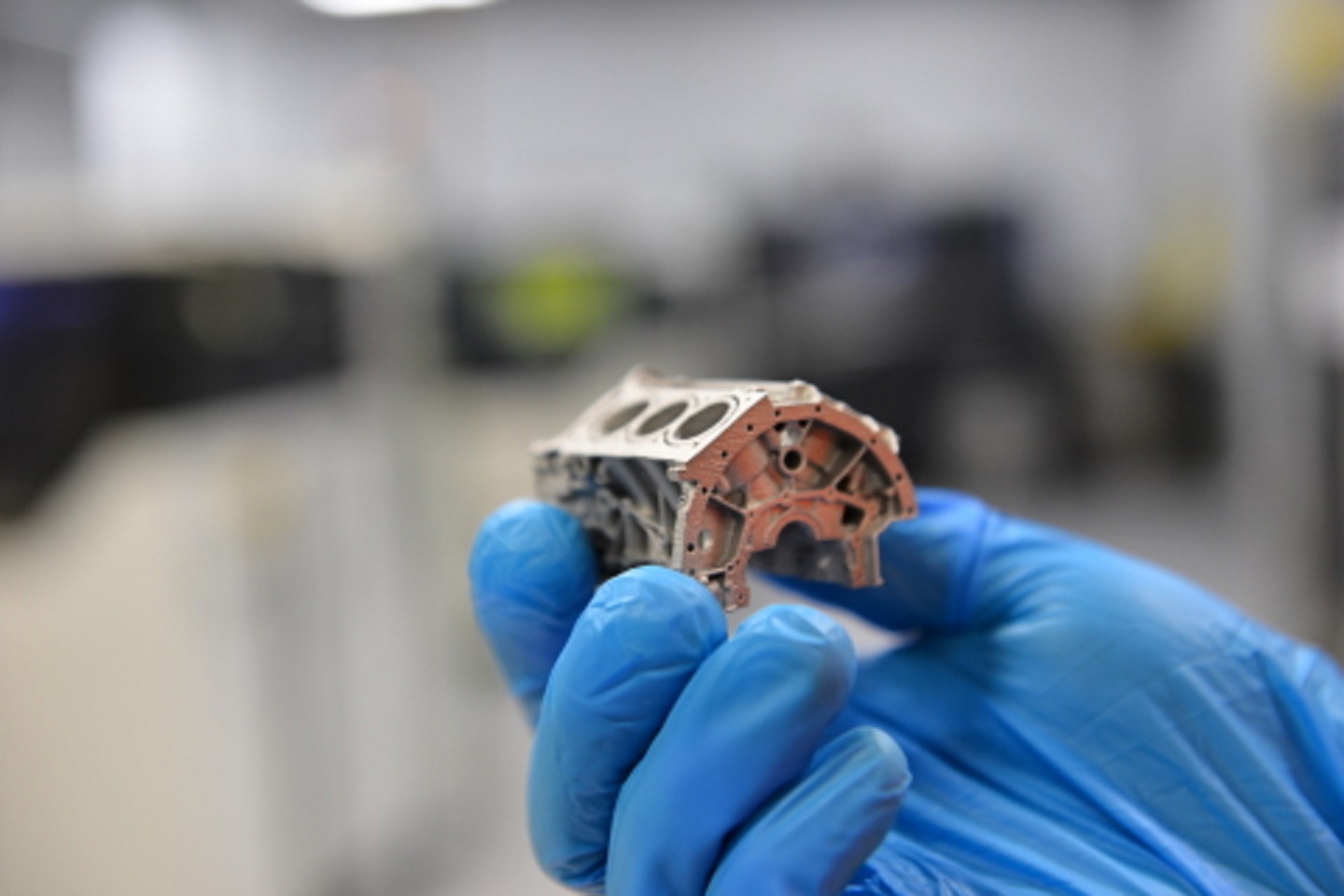
Ford and ExOne have developed a patent-pending process for binder jet 3D printing and sintering of 6061 aluminum.
According to the companies, the new process can deliver properties comparable to die casting. While some aluminum alloys can already be laser 3D printed, the process is reportedly much slower than the one developed by Ford and ExOne.
‘While the 3D printing process is very different than stamping body panels, we understand the behavior of aluminum better today, as well as its value in light-weighting vehicles,’ said Harold Sears, Ford technical leader for additive manufacturing (AM). ‘High-speed aluminum 3D printing paves the way for other opportunities that we’re just now starting to take a look at because of the ability to do complex parts with aluminum that previously weren’t possible.’
Binder jetting uses a digital file to inkjet a binder into a bed of powder particles such as metal, sand, or ceramic to create a solid part, one thin layer at a time. When printing metals, the final bound metal part must be sintered in a furnace to fuse the particles together into a solid object. The heating process reinforces the strength and integrity of the metal, and while the process for sintering stainless steel is well understood, achieving high densities greater than 99% is an industry breakthrough for aluminum, the companies say.
This story uses material from ExOne, with editorial changes made by Materials Today. The views expressed in this article do not necessarily represent those of Elsevier.




